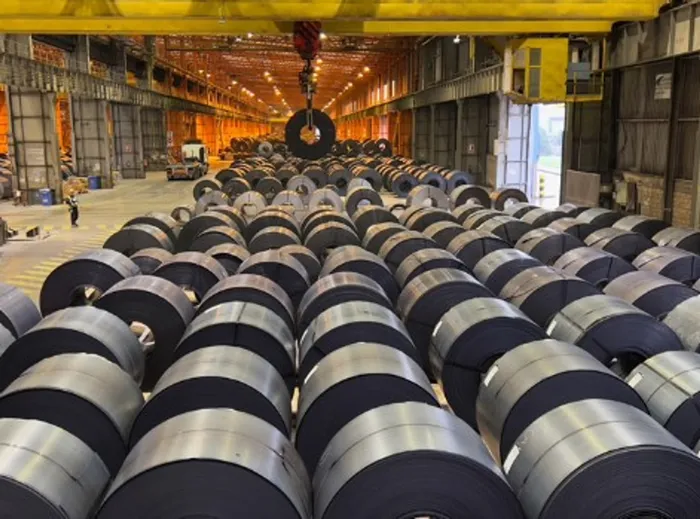When the furnaces fall silent: Why South Africa’s steel collapse could spark a new industrial era

The furnaces of Newcastle once glowed like a promise, molten rivers of steel feeding a nation’s industrial dreams, says the author.
Image: File
The furnaces of Newcastle once glowed like a promise, molten rivers of steel feeding a nation’s industrial dreams. Today those mills lie silent, haunted by at least 3 500 direct job losses and almost 100 000 livelihoods indirectly destroyed. In October 2025, the European Commission proposed cutting tariff-free steel import quotas to 18.3 million tonnes and applying 50 % duties on any shipments above that limit, with plans to take effect next year. The move has tightened the vise on South Africa’s already-fragile sector, threatening to halve export volumes and place another R9 billion in trade at risk.
In a country where 34 % unemployment gnaws at hope, steel’s collapse is not destiny; it is the result of decades of policy drift and industrial neglect. What we are witnessing is not only a trade dispute but an economic reckoning. Yet inside this tariff storm lies a quiet opportunity, a chance to rebuild an industrial future rooted in African demand, green-steel innovation and regional integration.
For years South Africa’s steel sector has stood at the uneasy intersection of global dependence and domestic dysfunction. The EU’s measures landed like a hammer on an already brittle industry that has seen production fall by nearly 30 % since 2020. July’s crude-steel output of 430 800 tonnes was 5.7 % lower year on year and ArcelorMittal’s retrenchments have rippled through supply chains from Mpumalanga to KwaZulu-Natal.
According to the South African Revenue Service, exports to the EU were valued at R20.3 billion in 2024, behind China’s R25.4 billion. That dependency exposes a painful truth: South Africa has tied its fortunes to markets turning inward while overlooking regional and domestic infrastructure demand worth billions.
Tafadzwa Chigwedere, the CEO of the South African Iron and Steel Institute, puts it bluntly: “Advocacy for infrastructure investment is no longer optional. Steel cannot thrive where roads, bridges and power lines remain theoretical.” His words echo a wider frustration that while tariffs are external shocks, the real crisis is internal inertia.
Behind the headlines lie structural weaknesses that have quietly corroded South Africa’s industrial base. Eskom’s unreliable supply and 20–30 % annual cost hikes have eroded competitiveness. Each blackout halts production and fractures investor confidence. Energy now accounts for almost a fifth of total steel-making expenses, a level unsustainable in a global market driven by efficiency. From ITAC safeguard duties to stop-start industrial master plans, steel has lacked a stable policy horizon. Minister Parks Tau’s recent reference to a 2025 Steel Strategy offers promise, but the sector has heard such pledges before. Execution, not rhetoric, will determine whether this plan joins the archive of unfulfilled frameworks.
Despite the Council for Scientific and Industrial Research’s capacity to pilot low-carbon and digital-process steelmaking, the sector has barely modernised. Advanced manufacturing and data-driven optimisation, already mainstream in China, South Korea and Brazil, remain peripheral in South African plants. The opportunity cost is staggering: productivity has stagnated while emissions remain high, threatening access to environmentally conscious export markets. OECD labour estimates show that over 30 000 jobs are at risk from market contraction and an absence of reskilling pathways. Unlike Germany’s dual training model, South Africa’s artisan pipeline has withered. The promise of green jobs in low-carbon metallurgy has yet to move beyond pilot projects.
Trade diplomacy has become a battlefield of survival. The EU justifies its tariff proposal through carbon-border adjustments, but the underlying motive is protectionism: shielding domestic producers while preaching green virtue. The United States, since August 2025, has maintained a 50% sectoral duty on South African steel and aluminium alongside a 30 % general tariff on most South African goods, threatening export losses of up to $2 billion. Meanwhile, Chinese surplus output, more than 80 million tonnes of excess capacity, is flooding African markets, undercutting regional prices and eroding margins. Zimbabwe, once an importer of South African billets, now exports about 94 000 tonnes of cheaper semi-finished steel each year. The message is clear: Africa is no longer merely South Africa’s backyard; it is becoming its competition.
Tassia Echezarraga of the Trade and Industrial Policy Strategies Institute warns, “Structural crises need regional focus. Industrial policy cannot stop at the border when supply chains already don’t.” Credible estimates suggest the African Continental Free Trade Area could lift intra-African trade by 35–45 % by the 2040s, with recent data already showing steady year-on-year gains. If harnessed intelligently, it could redirect hundreds of millions of dollars in displaced exports into African markets hungry for rail, housing and energy infrastructure.
Reviving steel is not about nostalgia for heavy industry; it is about self-reliance. Every tonne of imported rebar or Chinese billet is a vote against local production, skills and tax revenue. To restore competitiveness, South Africa must move beyond defensive tariffs and embrace strategic re-industrialisation built on three shifts. The government, development banks and private capital should co-design a regional procurement framework that guarantees offtake for African steel in public works. If even 25 % of AfCFTA’s projected $400 billion infrastructure spend were regionally sourced, it would reignite domestic demand and secure jobs across the SADC corridor.
Instead of chasing EU compliance, South Africa should develop its own decarbonisation path, linking carbon credits, local beneficiation and industrial parks powered by renewables. A just energy transition for steelworkers is not only feasible but strategic. Green certification can unlock access to emerging markets in Africa and the Middle East less burdened by EU bureaucracy. The new steel economy must be human-centred and technology-driven. Reskilling 20 000 workers in automation, materials science and digital-twin processes could raise productivity by 15–20 % within five years. The CSIR’s expertise and university partnerships are a national asset capable of turning policy into performance.
The true challenge is governance, not metallurgy. South Africa’s steel decline mirrors the broader weakness of state capability: plans without implementation, summits without outcomes, task teams without traction. The EU’s tariff proposal may have sparked outrage, but it also reveals how fragile our export dependency has become. Leadership here means coordination, courage and continuity. Coordination aligns trade, energy and industrial policy under accountable management. Courage confronts vested interests that profit from imports and policy paralysis. Continuity sustains reforms beyond electoral cycles. The alternative is a slow economic erosion, watching another generation of skilled workers drift into unemployment while industrial towns decay into symbols of lost potential.
Africa’s next industrial chapter will not be written in Geneva or Brussels; it will be forged in the furnaces of its own factories. South Africa, rich in iron ore, energy expertise and human capital, can lead that renewal if it chooses vision over victimhood. Reviving steel is not protectionism; it is pride grounded in procurement math. Without local mills, rails, turbines and transmission lines depend on foreign pricing power.
As Chigwedere reminds us, “Trade advocacy is urgent.” But advocacy alone will not melt the ore; investment will. If the state channels its reconstruction drive into real industrial demand, rails, ports and power stations, the fires of Newcastle and Vanderbijlpark can burn again, not as relics of the past but as symbols of purposeful renewal. The EU’s tariff proposal may have closed one door, but the AfCFTA opens another. The only question is whether South Africa will walk through it with conviction or remain paralysed at the threshold, counting its losses while the continent builds without it. Steel is not dying; it is being smothered by inertia. What comes next will depend not on Brussels’ quotas but on South Africa’s will to act, to build and to believe again in the strength of its own hands.

Nomvula Mabuza.
Image: Supplied
Nomvula Zeldah Mabuza is a Risk Governance and Compliance Specialist with extensive experience in strategic risk and industrial operations. She holds a Diploma in Business Management (Accounting) from Brunel University, UK, and is an MBA candidate at Henley Business School, South Africa.
*** The views expressed here do not necessarily represent those of Independent Media or IOL.
BUSINESS REPORT